We started heading to the Riviera Maya shortly after we received our cave diving training. The caves in Mexico are different than the caves in N. Florida. While the caves in N. Florida were formed by the movement of the water along the limestone, carving out the formations that we see, the caves in Mexico were formed in air and flooded when the sea levels rose.
It’s been 15 years since we’ve set foot on the mainland. There are lots of caves to see there but we’ve been so busy with our exploration projects in Cozumel that we just haven’t had the opportunity to fit in a trip to the mainland since then. Here’s some information about the caves we have seen on the mainland.
CHAN HOL | GRAND CENOTE | NAHOCH | MAYAN BLUE | PONDEROSA
We’ve done so much more diving in the cenotes located on the island of Cozumel that we have dedicated a website to it. Click on the following link to take you there.
COZUMEL
CHAN HOL
Chan Hol is located south from most of the other cenotes. It is just off the road. In fact, you are likely to hear vehicles traveling overhead after you’ve entered the cave. The entrance to this cave is not a large cenote that can be used by snorkelers or open water divers. In fact, the entrance to the cave is what cave divers call a restriction, a passage that only allows one diver at a time to pass through. You have to kneel in the small pool to pull your fins on and this typically mucks up the visibility so you will be going through the restriction with reduced visibility. However, the visibility quickly clears up once inside the first large chamber.
The cave is formed by light colored and white limestone. If you know where to look you can also find ancient Mayan pottery and skeletal remains inside.
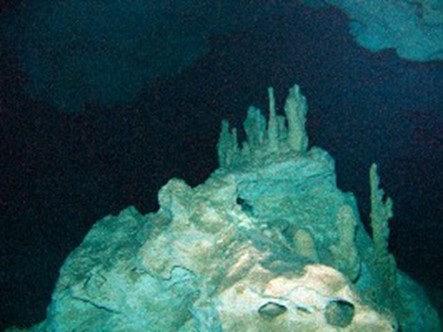

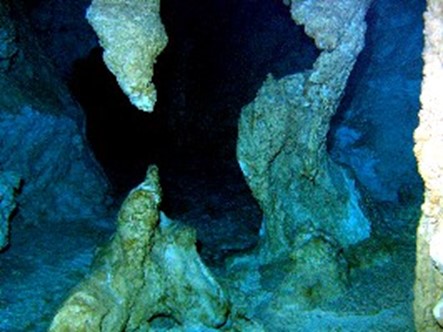
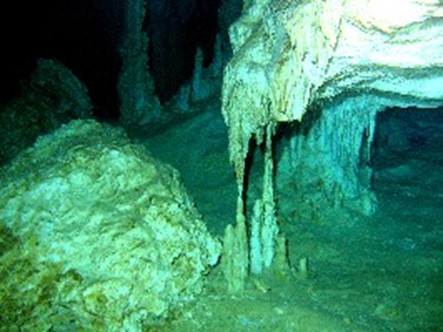
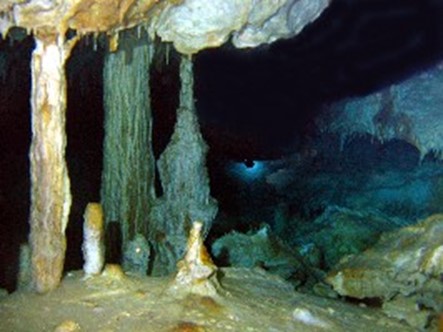
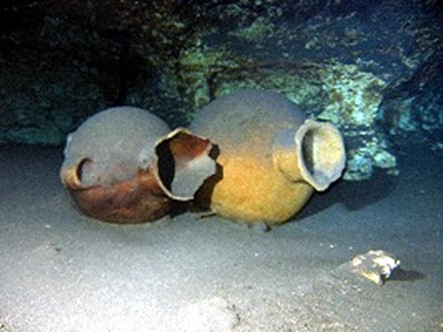
GRAND CENOTE
Grand Cenote is located off the highway to Coba close to Tulum. This cenote is a great place for snorkelers and open water divers because you can swim into the cave for quite a distance before the ceiling slopes down into the water. Open water divers need to be careful and attentive, though, because you could find yourself in an overhead without even realizing it. Don’t go up to the warning signs without proper overhead training. They are already in the overhead.
There is enough open water area for snorkelers and divers to enjoy this beautiful cenote for quite a while. On the opposite side of the cenote from the cave opening, the water passes under a land bridge to another cenote. This is a shallow area that can be swam across about halfway before it becomes shallow enough to walk the rest of the way
For the trained cavern diver, there is a gold line that runs along the entire perimeter of the cavern/cenote. This is one of the most beautiful caverns we’ve seen. There is quite a bit to see here. In fact, cavern divers can spend over an hour here without getting bored!
Divers should be prepared to show a certification card as employees on site do check for that. There are restrooms available for the public, as well as snorkeling gear for rent. Do not apply sun screens or lotions before heading to Grand Cenote because it will contaminate the water. However, it’s not really needed as there is plenty of shade in and around the cenote.
Here are some more photos of what you can find in the cave if you’re properly trained:

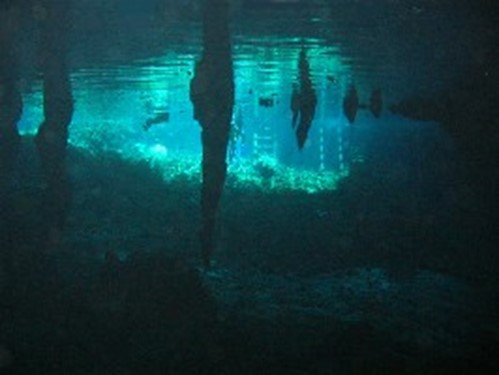

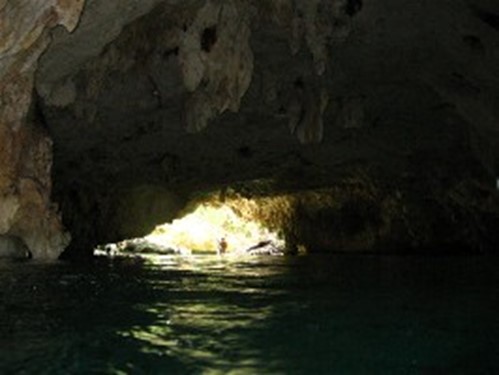
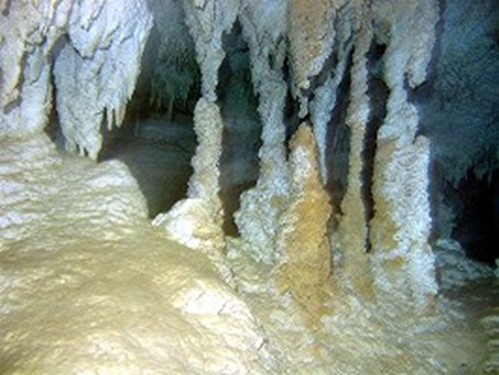

NAHOCH
Nahoch is a cenote similar to Grand Cenote located off the main highway that runs from Cancun to Tulum. The access road from the highway is a bumpy dirt road that you must travel about 15 minutes before coming to the turn off to the cenote. This cenote can be difficult to find and is best done with a guide. It is well worth it though. Snorkelers and open water divers can also go for quite a distance before the ceiling slopes down into the water. The cenote is teeming with life. And it’s large size allows for a lot of time to be spent here.
For the trained cave diver, this can be a great cave. It is rather shallow allowing for a long dive without running into a decompression obligation. It also allows you to see roots penetrating through the ceiling into the cave.
There are restrooms and changing rooms available. There is also a rope and pulley system here to lower and raise tanks into and out of the cenote.


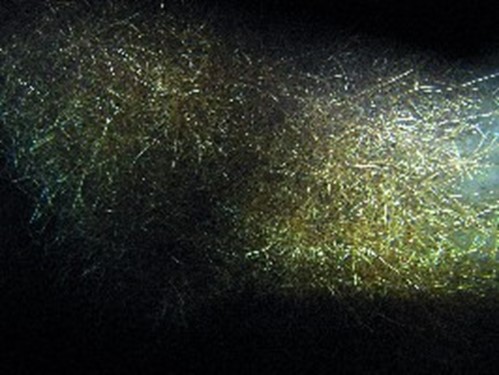
MAYAN BLUE
Mayan Blue is a beautiful system that’s really only suitable for cave divers. The cenote is not too small but the entrance to the cave is not that large and you quickly find yourself in the cave.
The cave provides you with a couple of options right from the start. The cave splits off into different passages right at the cenote so you have to decide which tunnel you want to dive that day. The passages here go deeper than most of the other caves on the mainland. We were breathing air and this was the only cave we ended up having a decompression obligation at the end of our dive.
PONDEROSA
Ponderosa is located off the main highway near Puerto Aventuras. This cenote is very large and frequented by many local swimmers. The cenote is also teeming with life and can offer hours of entertainment for snorkelers and open water divers. Unlike Grand and Nahoch, the Ponderosa cave begins under water. There are two entrances here, one near the entry dock and one on the far end of the cenote from the dock. The one on the far end is typically entered by cave divers, while the one closest to the dock is entered by cavern divers.
The great thing about this system is that cavern divers can spend a long time in here without ever leaving the cavern zone. There are several cenotes in line, all less than 400′ apart. You are entering a new cavern zone before you ever leave a previous cavern zone. Cavern divers can swim almost 1000′ without ever leaving the cavern zone.
Another great thing about this system is the halocline. A halocline occurs when salt water and fresh water meet. Salt water, being denser and heavier, makes up the lower layer, while fresh water makes up the top layer. When swimming above the halocline, it seems like you are flying over the water, and when swimming under the halocline, it seems line you are swimming just below the surface. Here’s a photo of a diver through the halocline. The blurriness is caused by the diver swimming through the halocline, not the camera.
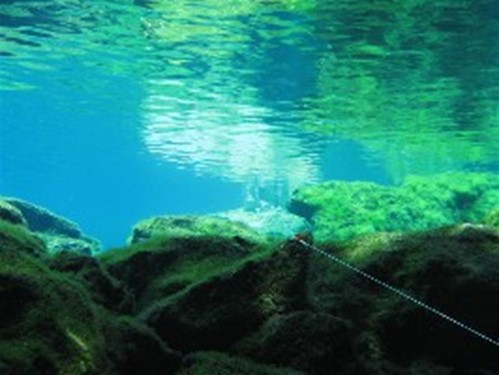
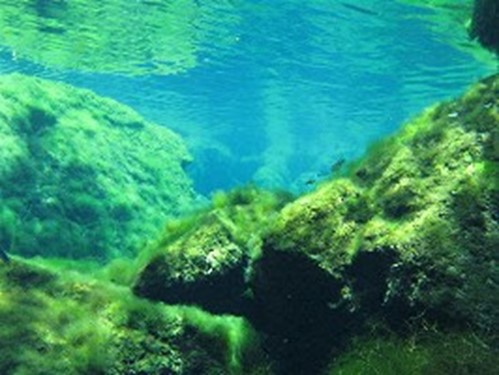
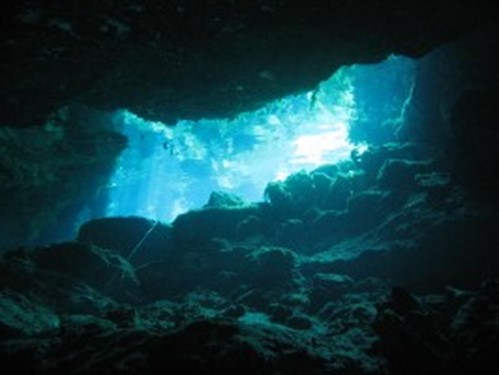
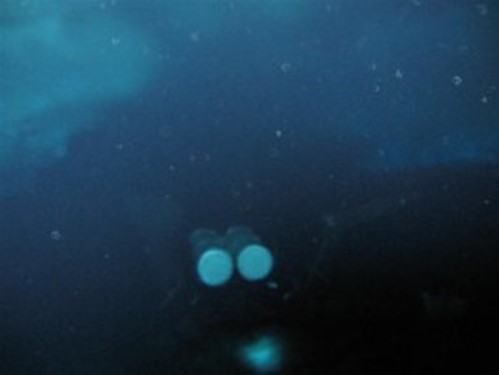
Check out the Ponderosa video below to experience the halocline in motion.
